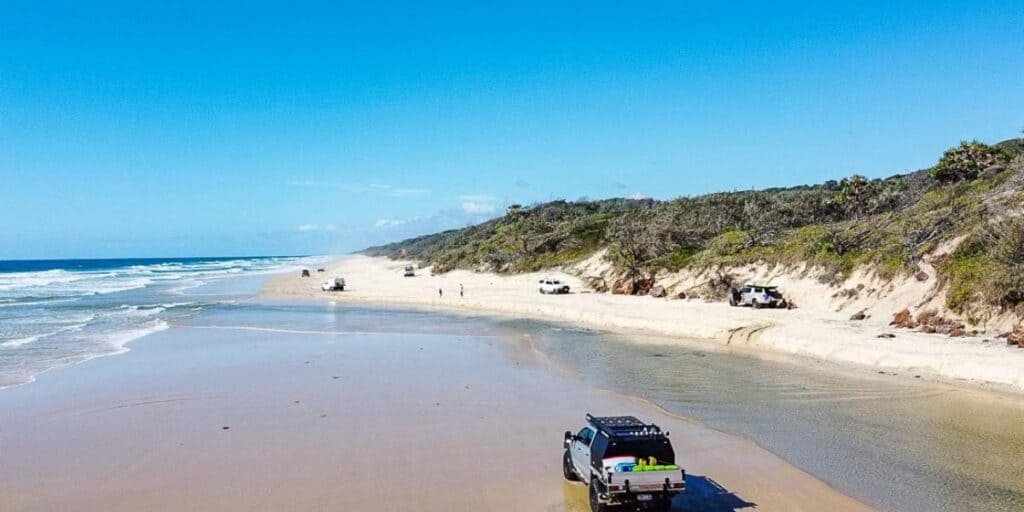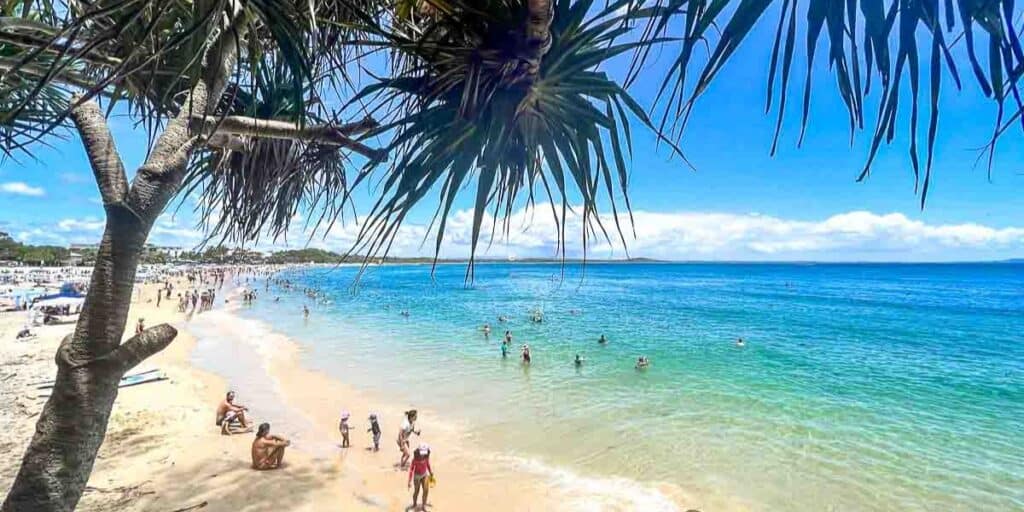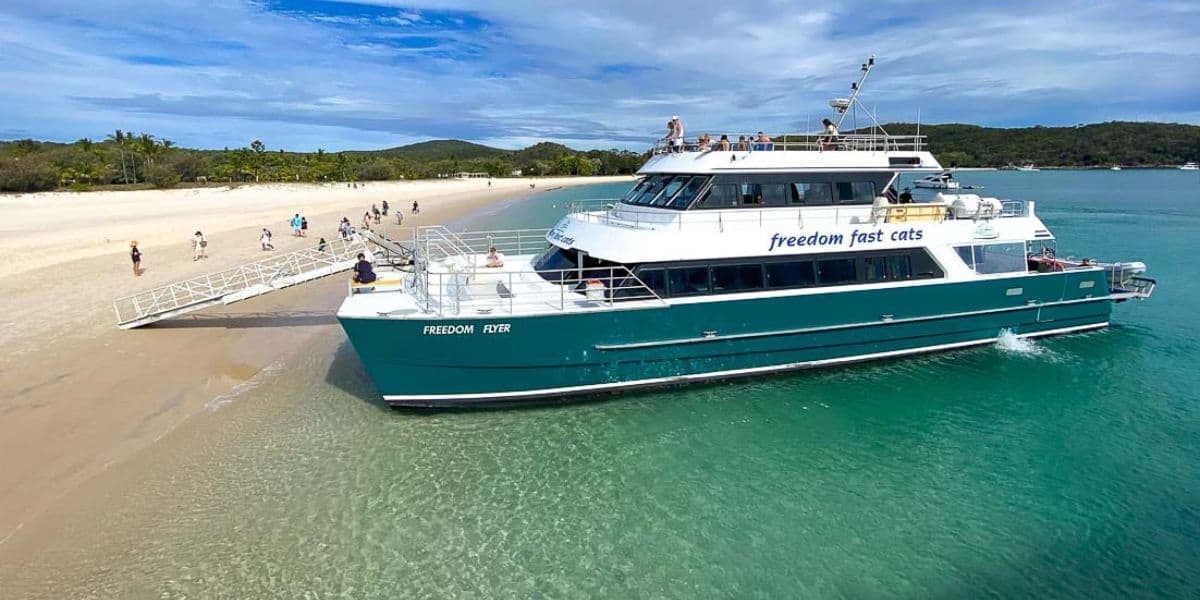Master your Queensland adventure with these essential travel tips for an unforgettable experience.
The Queensland Travel Guide acknowledges Aboriginal and Torres Strait Islander peoples as the First Australians. We recognise their cultures, histories and diversity and their deep connection to the lands, waters and seas of Queensland and the Torres Strait. Always was, always will be, Aboriginal land.
If you’re planning your first trip to Queensland, you’re in for a real treat. From stunning beaches and lush rainforests to vibrant cities and the iconic outback, Queensland has something for everyone.
As someone who’s lived in this beautiful state my entire life and explored it extensively, I’m excited to share my top travel tips with you. These insights will help you make the most of your trip and ensure it’s as smooth and enjoyable as possible.
Let’s dive in and check out some practical tips to help you make the most of your first trip to Queensland.
This post may contain compensated links. Please refer to my disclaimer here for more information.
1. Best Time to Visit

Queensland has a diverse climate, so the best time to visit depends on where you’re headed.
- Brisbane, Sunshine Coast and the Gold Coast: These areas have a subtropical climate and are great to visit year-round. However, spring (September to November) and autumn (March to May) offer mild temperatures and fewer crowds.
- Cairns and the Great Barrier Reef: The dry season (May to October) is ideal, with pleasant temperatures and minimal rainfall. The rest of the year is the wet season, which is hot and humid. Keep in mind that stinger season is from November to May, so during these times, you will need to wear a stinger suit while in the water.
- The Outback: Visit during the cooler months (April to September) to avoid the extreme heat, plus many attractions either shut down or have limited operating hours outside of these months.
In addition to the weather, you may want to try to avoid Queensland school holidays, as these usually push prices up and make popular areas and attractions super busy. Check here for Queensland school holidays before you book.
Keep in mind that private schools usually go on holidays a week earlier than public schools. If you’re visiting the Gold Coast, you may also want to consider New South Wales school holidays, as these can differ from Queensland school holidays.
2. Getting Around

Queensland is an extremely large state – let’s put it this way, it would take you 34 hours to drive it from end to end. And outside of the major cities, public transport really isn’t that great. So depending on where you’re planning on going, you’ll likely need to use a combination of various transport options.
Renting a car is the best way to explore Queensland at your own pace. This is particularly true for those planning on visiting a few different destinations on their trip or basically anywhere outside of a city.
In terms of rideshare, within most bigger cities in Queensland, you will find Uber, DiDi and Ola. These are simple to use, just download the App and link up a payment method. Unlike other places around the world, there is no option to pay your driver cash.
If you plan on staying in cities like Brisbane or the Gold Coast, you can rely on public transport (buses, trains, and ferries). Public transport is reasonably easy and efficient to use. While you can use your card for trains, you will need to have a Go Card for travelling on other forms of public transport.
For those planning on visiting a range of destinations during their trip to Queensland, then flying between them is often your best bet. You can often pick up relatively cheap flights between major cities. Flights to the outback and regional towns however can be crazy expensive.
I recommend you check on Skyscanner to see what flights are available, but then always book directly with the airline.
3. Packing Essentials

As to what you bring on your first trip to Queensland, well this is going to really depend on where you’re travelling to and what time of year you’re travelling. However, there are a few general tips you can follow:
- Clothing: Queensland’s climate varies, so pack accordingly. Lightweight, breathable clothing is ideal for the coast, while warmer layers are necessary for the outback during winter (it can get very cold!). Don’t forget swimwear for the beaches!
- Sun Protection: The Australian sun is strong, so pack a wide-brimmed hat, sunglasses, and plenty of reef-safe sunscreen.
- Insect Repellent: Essential for keeping the mozzies at bay, especially in tropical and outback areas.
- Comfortable Shoes: Good walking shoes are a must, whether you’re hiking in the rainforest or exploring city streets.
- Bring a reusable water bottle to stay hydrated and reduce plastic waste.
4. Health and Safety

To ensure you remain safe and healthy while travelling around Queensland, keep in mind the following:
- Swimming: Always swim between the red and yellow flags on patrolled beaches. Be aware of stingers (jellyfish) in the northern waters from November to May, and swim in stinger nets where they are available. Also, be mindful that Tropical North Queensland is home to crocodiles, so always read and obey warning signs and don’t swim in creeks or rivers.
- Wildlife: Queensland is home to unique wildlife. Admire animals like kangaroos and koalas from a distance, and be cautious of snakes and spiders in the wild.
- Sun Protection: Apply sunscreen regularly, wear protective clothing, and stay hydrated to avoid heatstroke.
- Health Insurance: Lastly, never leave home without travel insurance!
If you do need emergency help, please call 000
5. Accommodation

In terms of accommodation, Queensland has a stack of different options. From five star luxurious hotels to basic motel rooms and budget cabins.
- Hotels and Resorts: Queensland offers a range of accommodation options, from budget-friendly hotels to luxury resorts. Popular tourist areas like the Gold Coast and Cairns have numerous choices.
- Holiday Rentals: Consider renting a holiday home or apartment, especially for longer stays or if you’re travelling with family. You can find these on sites such as Booking.com or Airbnb.
- Camping and Caravanning: For a more adventurous experience, there are many campgrounds and caravan parks across the state. National parks often have beautiful, secluded spots. Generally, you won’t find these sorts of places on Booking.com so you will need to book directly.
Tips: Book accommodation in advance, especially during peak seasons and school holidays. I like to use Booking.com as they offer free cancellation for most properties.
6. Money Matters

In Queensland, like the rest of Australia we use Australian dollars – with 100 cents equalling one Australian dollar. Notes come in $5, $10, $20, $50, and $100 denominations, while coins come in 5c, 10c, 20c, 50c, $1 and $2 denominations.
As you can see from above, notes are colourful so easy to tell the difference and the coins come in different sizes and either silver or gold, also making them easy to distinguish.
ATMS are everywhere, so you’ll have no issue getting money out no matter where you are. However cards (or smartphones and watches) are also welcomed pretty much everywhere, so feel free to mostly rely on using cards as opposed to cash.
In terms of credit cards, you’ll find Visa and Mastercard welcomed in most places, whereas AMEX is generally only accepted in larger stores and restaurants. Also note that smaller stores and cafes etc are likely to charge a small fee for the use of credit cards.
Tipping is not expected in Australia, however I am noticing more and more places encouraging it. But as a local I don’t tip and so no one will blink and eye if you don’t tip either.
7. Connectivity

Like pretty much anywhere you go in the world today, when travelling within Queensland it’s essential you have a mobile phone to look things up, get directions, book tickets, make reservations etc.
While it’s recommended to have your own data, many cafes, hotels and even public spaces have free wifi. However I wouldn’t rely on this and would ensure you grab a local SIM card for at least data, or get an eSim, which is what I do when I travel now.
I’ve been using Airalo to buy an eSim before I leave home, which has been working great. You can use my referral code (MELISS6149) and get $3 USD off your sim.
In terms of mobile coverage you’ll be fine in and around major cities. However keep in mind that in the outback coverage will be limited to towns only.
I hope these travel tips help you make the most of your first trip to Queensland. It’s a diverse and beautiful state with so much to offer, and I’m sure you’ll have an unforgettable adventure.
If you have any questions or need more recommendations, feel free to reach out.
Safe travels and enjoy every moment of your Queensland journey!
And if you’re on Pinterest, save one of the images below for later



